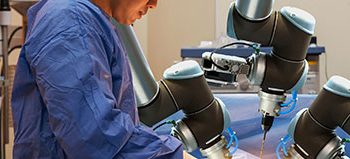Introduction to 3D Bioprinting
3D bioprinting is an emerging technology that uses 3D printing to create three-dimensional structures that contain living cells. It is a type of additive manufacturing technology that creates complex biological structures with precise control over cell placement, architecture, and environment. 3D bioprinting is used to create artificial organs, tissues, and other medical devices that can be used to treat a variety of diseases and injuries. In addition to medical applications, 3D bioprinting has the potential to revolutionize the food and cosmetic industries by creating edible and cosmetic products with an unprecedented level of control over the formulation and structure of the product.
Overview of 3D Bioprinting Market
3D bioprinting is an emerging technology that uses 3D printing techniques to combine cells, growth factors, biomaterials and other biological components to create a functioning 3D tissue construct. The technology is being used to develop therapeutic solutions for a variety of medical applications, including tissue and organ regeneration, drug discovery, and cancer diagnostics and treatments.
The global 3D bioprinting market is expected to grow at a compound annual growth rate of more than 30% from 2020 to 2027. This growth is driven by increasing research and development activities in the field of regenerative medicine, growing investments from major players in the market, rising demand for organ and tissue transplants, and technological advancements in 3D bioprinting.
The 3D bioprinting market is segmented by type, application, end-user, and geography. By type, the market is segmented into microfluidic bioprinting, laser-assisted bioprinting, and extrusion-based bioprinting. By application, the market is segmented into tissue engineering, drug discovery, and others. By end-users, the market is segmented into hospitals and healthcare centers, research and development centers, and others.
Current Trends in 3D Bioprinting
- Increased Availability of Materials: Over the past few years, advances in materials technology have made 3D bioprinting more accessible. 3D printing materials such as hydrogels, proteins, and other biological materials are now widely available. This has allowed for more intricate and complex structures to be printed.
- Faster Printing Speeds: Improvements in 3D printing technologies have made it possible to print 3D structures in a fraction of the time compared to traditional methods. This has enabled researchers to create complex biological structures faster, leading to more efficient research.
- Improved Accuracy: The accuracy of 3D bioprinting has also been improved with recent advancements. This has allowed for more precise control over the printed structures, leading to more realistic results.
- Higher Resolution: Improvements in printing resolution have enabled researchers to create finer details in their printed structures. This has allowed for more realistic 3D printed organs and tissues to be created.
- Automation: Automation of the 3D printing process has allowed for faster and more efficient printing. This has enabled researchers to quickly produce complex biological structures and to make multiple copies of their structures.
Advantages and Disadvantages of 3D Bioprinting
Advantages:
- 3D bioprinting can be used to create complex, functional tissue structures with precise dimensions, which could eventually be used in human transplants.
- It can be used to create custom implants and prosthetics, which could improve the quality of life of the patient.
- 3D bioprinting is faster, cheaper, and more accurate than traditional methods of tissue engineering.
- It offers an unprecedented level of control over how cells are arranged and what types of materials are used in the printing process.
- 3D bioprinting could potentially be used to test the safety and effectiveness of drugs prior to human trials, which could save time and money.
Disadvantages:
- 3D bioprinting is a relatively new technology, and it is not yet fully understood.
- It is expensive and requires specialized equipment, which limits its accessibility.
- There are ethical concerns about potential uses of 3D bioprinting, such as the creation of organs for human use.
Applications of 3D Bioprinting
- Personalized Medicine: 3D bioprinting can be used to create personalized medicines such as tissue-engineered implants, scaffolds, and organoids. These personalized medicines can be used to treat a variety of diseases including cancer, heart disease, and diabetes.
- Skin Regeneration: 3D bioprinting can be used to create tissue-engineered skin grafts which can be used to treat severe burns and wounds.
- Tissue Engineering: 3D bioprinting can be used to engineer complex tissues such as bone, cartilage, and muscle. These tissues can be used for a variety of medical purposes such as reconstructive surgery and drug testing.
- Drug Discovery and Testing: 3D bioprinting can be used to create 3D tissue models which can be used to test the efficacy of potential drugs.
- Organ Transplantation: 3D bioprinting can be used to create organs such as heart, liver, and kidneys which can be used for transplantation.
Future Outlook of 3D Bioprinting Market
The 3D bioprinting market is expected to grow significantly over the next few years. The rising demand for 3D bioprinting in various applications such as tissue engineering, regenerative medicine, drug discovery, and personalized medicine are likely to drive market growth. Additionally, the growing demand for organ transplants, increasing investments in research and development activities, and technological advancements are expected to propel the market growth. However, the high cost associated with 3D bioprinting solutions and the lack of skilled professionals are likely to impede market growth.
Download PDF Now to Know More about the “3D Bioprinting Market Size, Forecast, Growth Opportunities.


